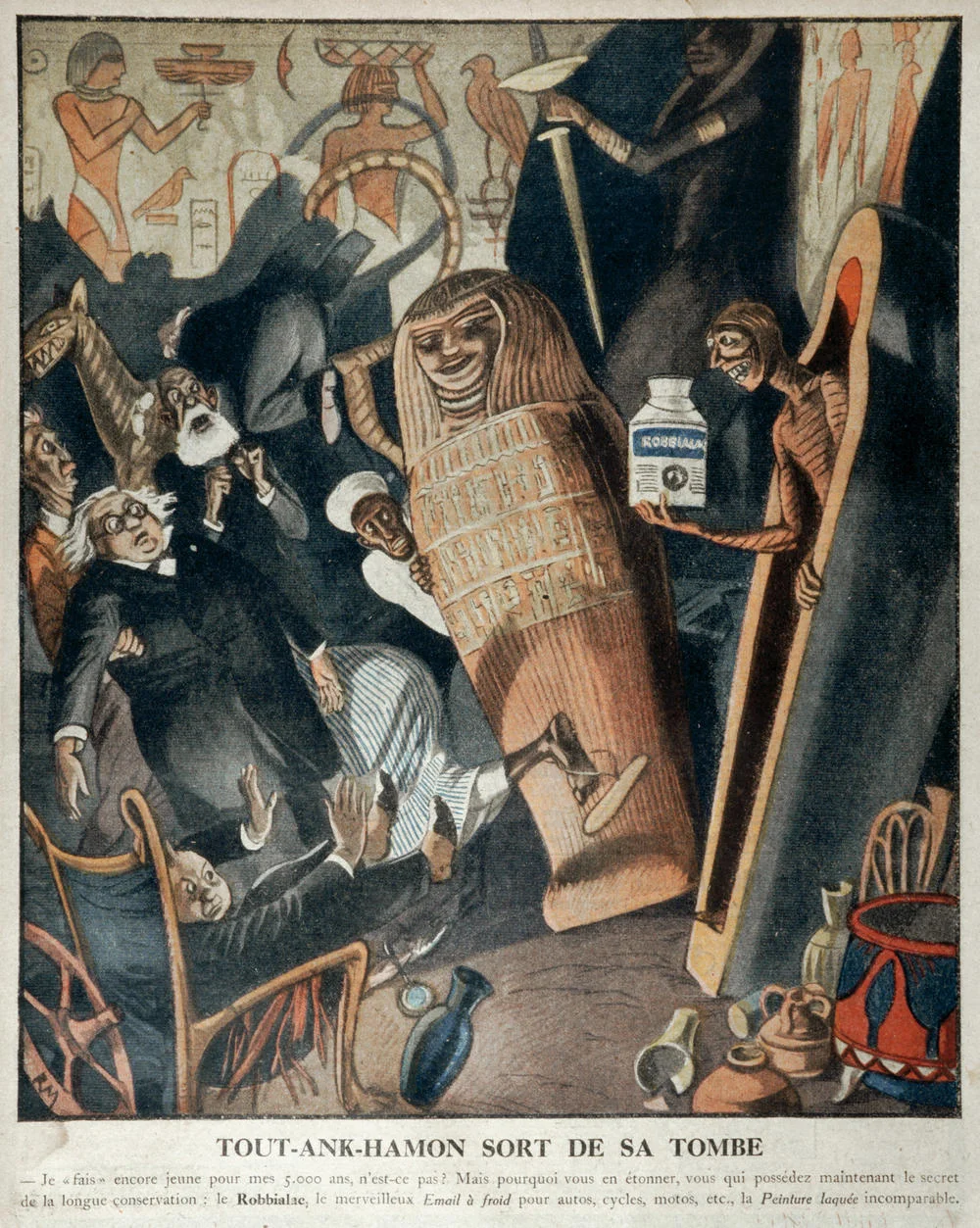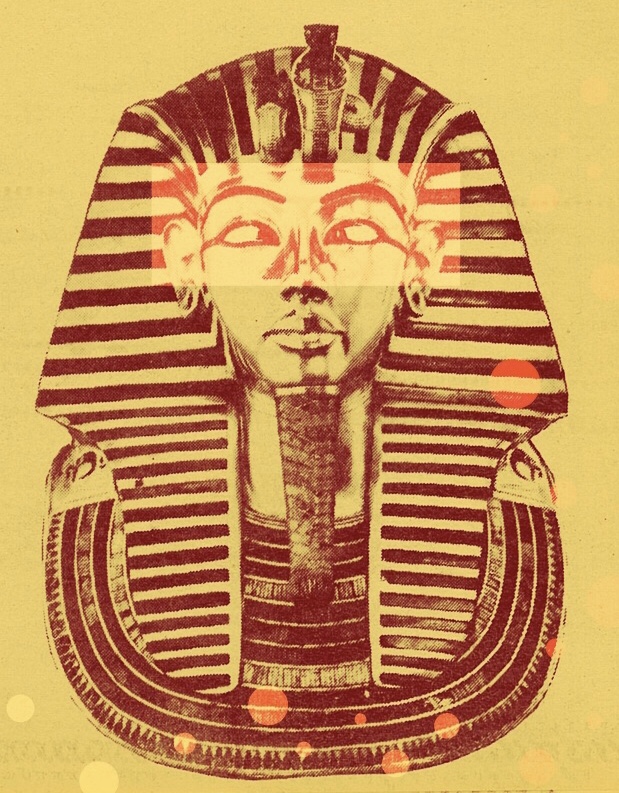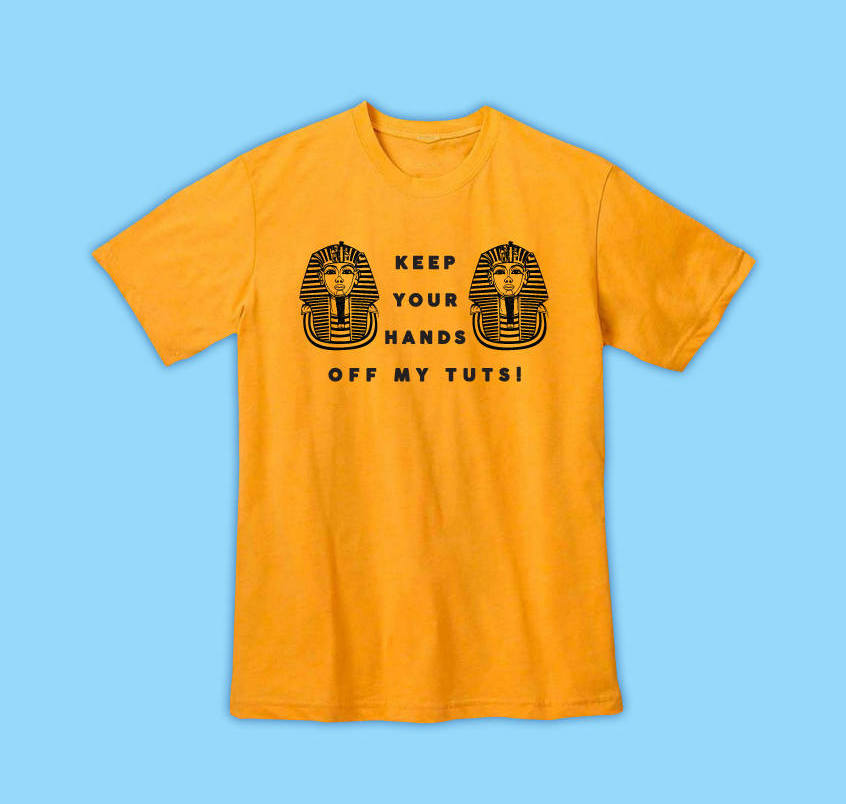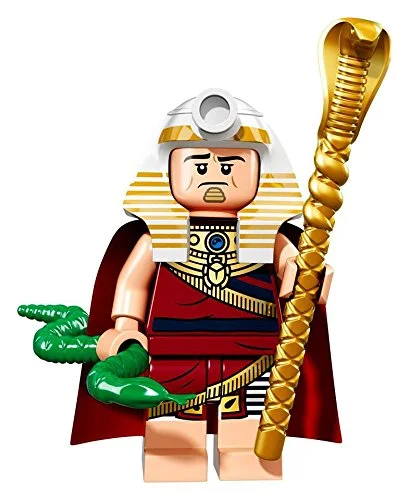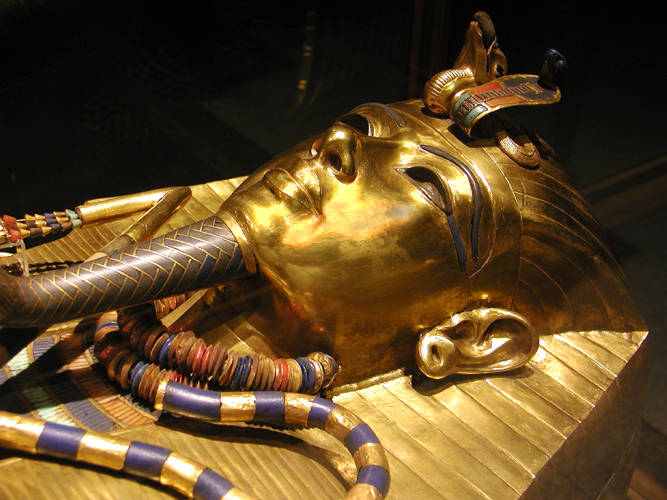Fascination with King Tut swept the nation, from a Batman villain to Steve Martin’s hit Saturday Night Live song.
A pop art take on King' Tut’s legendary funerary mask
Tutmania, which swept the West upon discovery of the Boy King’s tomb in 1922, experienced a resurgence when King Tut’s riches toured the United States in ’76. Due to fear of hijacking, the precious artifacts traveled in secrecy aboard the U.S.S. Sylvania, where they were stored amidst boxes of refrigerated hamburger patties.
An illustrated French newspaper depicts the discovery of Tutankhamun’s treasure-laden tomb, which sat undisturbed by 3,500 years
Even a brand of lemons was named after the Boy King
Candy, Cross Stitch and Kitsch
The commoditization of the U.S.’s fascination with this pharaoh has included everything from Tut-branded California lemons (circa the 1940s) to unlicensed kitsch — including T-shirts with a pair of strategically placed golden burial masks proclaiming, “Keep Your Hands Off My Tuts!” (from the 70s).
Tutmania invaded many aspects of American life, showing up on kitschy T-shirts like this one
There was even a softbound book of needlepoint patterns, which the creator, Robert Horace Ross, based upon the touring Treasures of Tutankhamun exhibition.
Who wouldn’t want a needlepoint of King Tut’s golden mask?
Novelty candies for kids included Yummy Mummies — artificially flavored hard candy sticks, similar in size to a tongue depressor and manufactured by the makers of Fun Dip. In the U.K., Terry’s Pyramint, the forgotten ’80s sibling of the Chocolate Orange, was packaged in a pyramid-shaped box. Inside was a dark chocolate pyramid with a hollow center filled with mint fondant similar in consistency to a Cadbury Creme Egg.
The tubby Batman villain King Tut was obviously delusional
Holy Cheesy Appropriation, Batman!
King Tut even made an appearance on the lighthearted 1960s TV series, Batman. Portrayed by the portly actor Victor Buono, the over-the-top villainous character of King Tut was invented for the small screen, making its first appearance in ’66 on a two-episode story arc, “The Curse of Tut/The Pharaoh’s in a Rut.”
A King Tut Batman Lego figurine
More high camp than the gritty realism of writer-director Christopher Nolan’s feature film take on the Dark Knight, Tut’s alter ego was a well-mannered professor of Egyptology named William Omaha McElroy. Knocked unconscious during a student riot at Yale, McElroy awakens, believing himself to be a diabolical King Tut. His appearance was announced by a ram-headed statue, mistakenly referred to as a sphinx. The villainous Tut takes up residence in an Egyptian exhibit in the Gotham City Museum, complete with a harem of comely women.
Fisticuffs ensue, various comic book KAPOWs, BOOMs and BOFFs appear on screen, and the episode ends with a literal cliffhanger: a kidnapped Bruce Wayne exiting the rear door of an ambulance (strapped to a gurney no less) before the vehicle drives off a 300-foot cliff.
The character obviously has some lasting appeal: It made an appearance in The Lego Batman Movie.
Steve Martin performed a silly song about King Tut on Saturday Night Live — which went on to become a Top 20 hit!
A Wild and Crazy Songwriter
In 1978, comedian Steve Martin wrote and debuted an elaborate sketch on Saturday Night Live accompanied by his song “King Tut” satirizing the fascination with the Treasures of Tutankhamun exhibition.
The show’s creator and executive producer Lorne Michaels pulled out all the stops, and it was one of the most expensive sketches performed on SNL. Martin, dressed in psuedo-Egyptian costume, sang and danced, turning his head and arms in opposite directions in imitation of Ancient Egyptian paintings.
Even though I was only 9 years old at the time, I can still remember the verse, “Born in Arizona, moved to Babylonia, King Tut.” A classic moment from the skit featured musician Lou Marini emerging from a sarcophagus in gold face paint to perform a raucous saxophone solo with Martin placing a blender at his feet as an offering. Not long after, the single, cleverly credited to Steve Martin and the Toot Uncommons, reached #17 on the Billboard Hot 100 chart, and went on to sell more than a million copies.
The renovated Tut statue at the Oriental Institute in Chicago
King Tut Goes Highbrow
A towering 17-foot-tall statue of King Tutankhamun can be seen in the Egyptian Hall of the University of Chicago’s Oriental Institute Museum. One of a pair, the likeness was discovered during the institute’s excavation efforts at Medinet Habu from 1926 to 1931. The better-preserved statue remained in Egypt, while the other was gifted to the institute.
Taking casts from the more complete twin statue, the institute’s talented restorer, Donato Bastiani, made the statue whole again. The inscription carved on the back pillar of the statue shows evidence of having been appropriated by Horemheb, the penultimate ruler of the Eighteenth Dynasty. However, the facial features of the figure strongly resemble other representations of Tutankhamun, suggesting that it was originally commissioned for him. Traces of the name of Tut’s successor Ay can be seen under the cartouche of Horemheb, indicating that the statue was usurped not once but twice. –Duke
